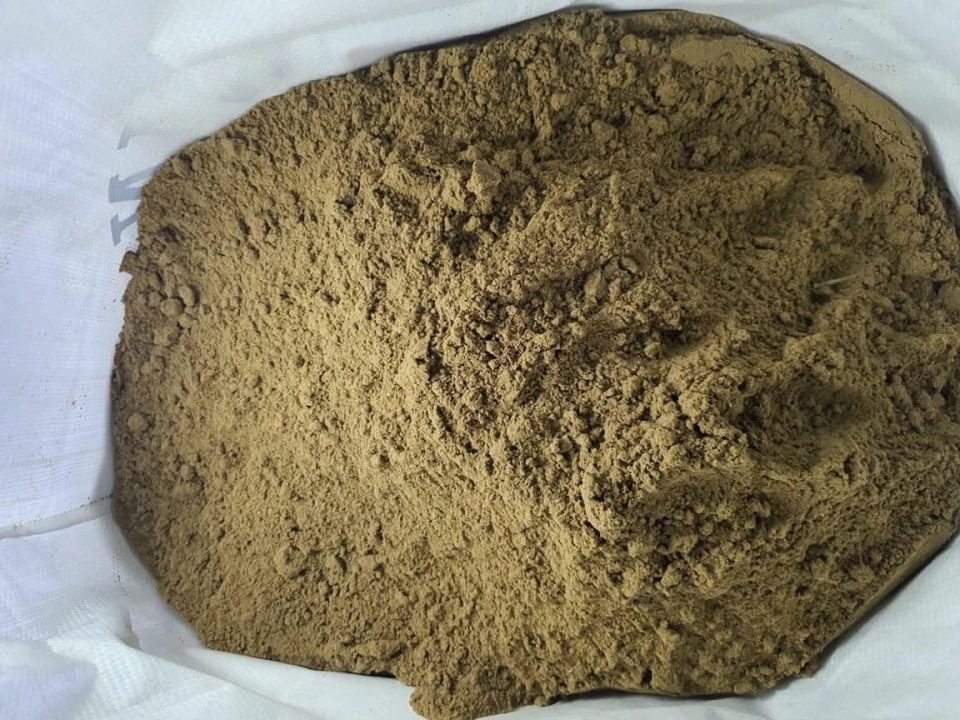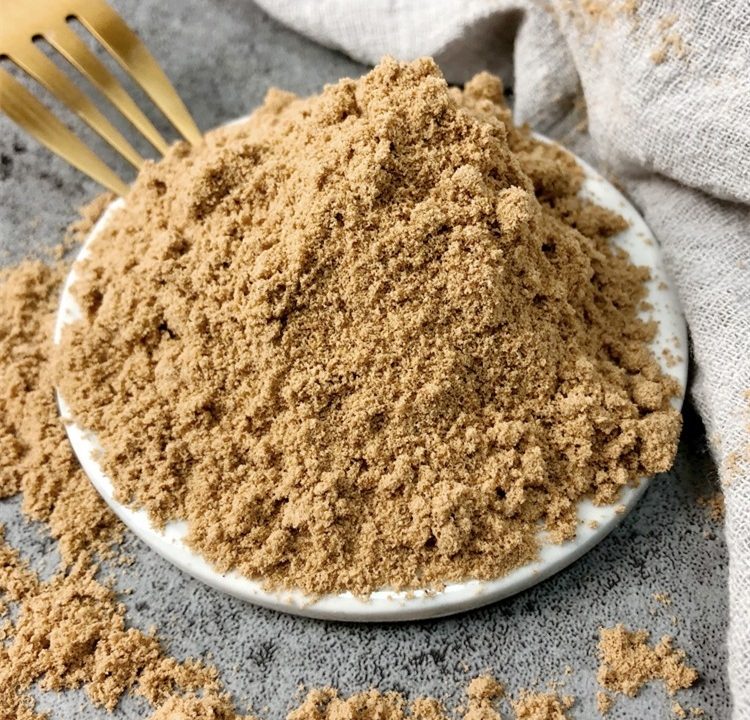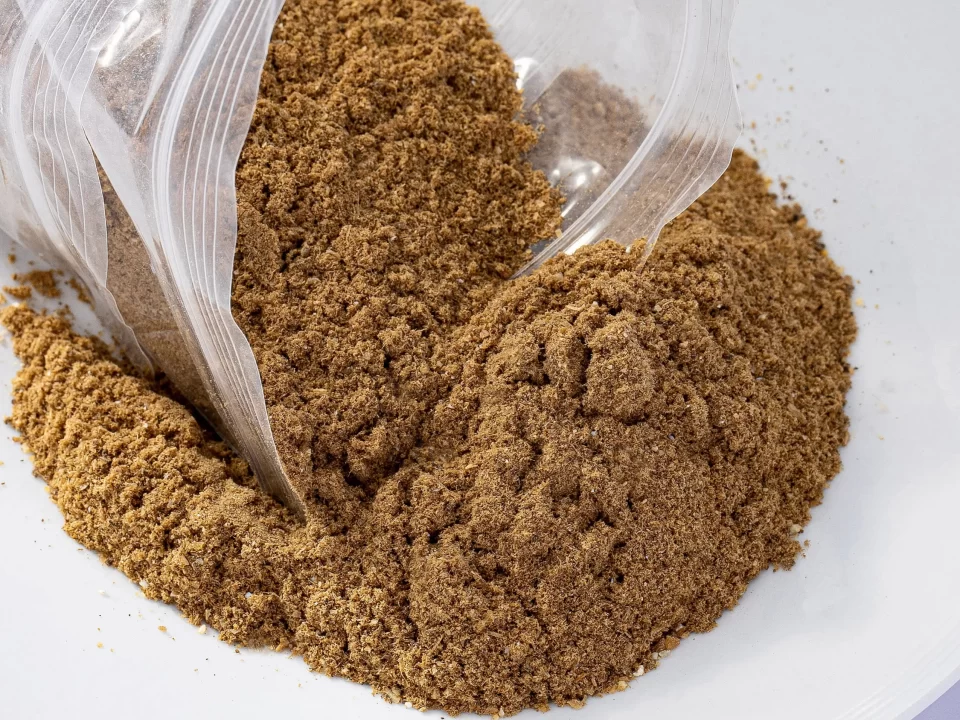Differences Between Poultry By-Product Meal and Chicken Meal

Chicken meal definition, standards and authenticity identification
April 30, 2025
Chicken Liver Powder
May 6, 2025Differences Between Poultry By-Product Meal and Chicken Meal
1. Definition and Composition
-
Poultry By-Product Meal: This is a rendered product made from the parts of poultry (e.g., chickens, turkeys, ducks) that are not typically consumed by humans. It includes offal (organs like livers, kidneys, hearts), feet, heads, bones, and sometimes feathers, but excludes manure and digestive tract contents. It may be derived from multiple poultry species.
-
Chicken Meal: This is a rendered product made specifically from chicken (Gallina species), typically consisting of clean flesh, skin, and bones, with or without accompanying fat. It excludes feathers, heads, feet, and entrails, focusing on higher-quality chicken parts.
2. Source Specificity
-
Poultry By-Product Meal: Can include by-products from various poultry species (e.g., chickens, turkeys, geese). The term “poultry” is less specific, and the composition may vary depending on the species used.
-
Chicken Meal: Exclusively sourced from chickens, making it a more specific and consistent ingredient.
3. Nutritional Quality
-
Poultry By-Product Meal: Typically has a lower protein quality due to the inclusion of less digestible parts like feathers (if hydrolyzed) or beaks. The protein content is usually 60–65%, but the amino acid profile may be less balanced due to the variety of tissues included.
-
Chicken Meal: Generally has a higher protein quality, with a content of 65–70%. It provides a more balanced amino acid profile, as it primarily consists of muscle meat and bones, which are more digestible and nutritionally valuable.
4. Ash Content
-
Poultry By-Product Meal: Often has a higher ash content (12–16%) because of the inclusion of bones, beaks, and other mineral-rich parts. High ash can reduce the overall protein concentration and digestibility.
-
Chicken Meal: Typically has a lower ash content (10–12%), as it contains fewer mineral-heavy by-products, resulting in a higher proportion of protein and fat.
5. Digestibility
-
Poultry By-Product Meal: Digestibility is lower (around 70–75%) due to the inclusion of less digestible parts like feathers or connective tissues. Variability in source species can also affect consistency.
-
Chicken Meal: Higher digestibility (80–85%) because it primarily consists of muscle meat and bones, which are more easily broken down by animals.
6. Regulatory Standards
-
Both ingredients are defined by the Association of American Feed Control Officials (AAFCO):
-
Poultry By-Product Meal: Must be rendered and consist of non-edible poultry parts, excluding feathers (unless hydrolyzed), manure, or stomach contents.
-
Chicken Meal: Must be rendered and consist of chicken flesh, skin, and bones, excluding feathers, heads, feet, and entrails.
-
-
Both must meet safety standards for contaminants (e.g., heavy metals ≤10 mg/kg for lead, microbial limits like Salmonella absent in 25g).
7. Use in Pet Food
-
Poultry By-Product Meal: Often used in lower-cost pet foods due to its affordability. However, its variable quality can make it less desirable for premium products.
-
Chicken Meal: Preferred in higher-quality pet foods because of its consistency, higher protein quality, and better digestibility.
Comparative Table
|
Parameter
|
Poultry By-Product Meal
|
Chicken Meal
|
|---|---|---|
|
Source
|
Multiple poultry species (chicken, turkey, etc.)
|
Exclusively chicken
|
|
Composition
|
Organs, feet, heads, bones, feathers (if hydrolyzed)
|
Flesh, skin, bones
|
|
Protein Content
|
60–65%
|
65–70%
|
|
Ash Content
|
12–16%
|
10–12%
|
|
Fat Content
|
10–14%
|
10–16%
|
|
Digestibility
|
70–75%
|
80–85%
|
|
Amino Acid Profile
|
Less balanced, variable
|
More balanced, consistent
|
|
Cost
|
Lower
|
Higher
|
|
Use in Pet Food
|
Common in budget products
|
Common in premium products
|
Scientific Analysis
Nutritional Analysis
-
Protein Quality: Chicken meal typically has a higher biological value (BV) due to its muscle meat content. For example, chicken meal may have a BV of 80–85, while poultry by-product meal might range from 65–75, reflecting its inclusion of less digestible tissues. Essential amino acids like lysine and methionine are more abundant in chicken meal (e.g., lysine: 4.5% vs. 3.8% in poultry by-product meal).
-
Mineral Content: Poultry by-product meal’s higher ash content indicates more calcium and phosphorus from bones and beaks (e.g., Ca: 4–5%, P: 2–3%), but this can dilute protein concentration. Chicken meal has slightly lower levels (Ca: 3–4%, P: 1.5–2%), prioritizing protein.
Digestibility Studies
Studies (e.g., AAFCO feeding trials) show that chicken meal has a higher apparent protein digestibility in dogs (85%) compared to poultry by-product meal (75%). This difference arises because muscle tissue in chicken meal is more enzymatically accessible than the collagen-rich tissues in by-products.
Variability and Consistency
Poultry by-product meal’s multi-species sourcing introduces variability in nutritional profiles. For instance, turkey by-products may have a higher fat content than chicken by-products, affecting the final product’s consistency. Chicken meal, being single-species, offers greater uniformity, which is critical for pet food formulation.
Practical Implications
-
-
Pet Health: Chicken meal’s higher digestibility and balanced amino acids support better muscle development and coat health in pets. Poultry by-product meal, while still nutritious, may lead to more undigested waste due to lower digestibility.
-
Consumer Perception: Pet owners often prefer chicken meal because it’s perceived as a higher-quality, “cleaner” ingredient, whereas poultry by-product meal is sometimes viewed as a lower-grade filler, despite being safe and regulated.
-
8. Processing Methods
8.1 Poultry By-Product Meal
-
Rendering Process: Poultry by-product meal is produced through rendering, where poultry by-products (organs, feet, heads, etc.) are cooked at high temperatures (typically 120–140°C) to separate fat, water, and solids. The solids are then ground into a fine powder.
-
Hydrolysis for Feathers: If feathers are included, they undergo hydrolysis (using high pressure and steam) to break down keratin into digestible proteins. This process can introduce variability in protein quality, as hydrolyzed feathers have lower bioavailability (biological value ~50–60).
-
Variability in Processing: Since multiple poultry species may be used, the rendering process may vary, affecting the final product’s consistency. For example, turkey by-products may require longer cooking times due to denser tissues.
8.2 Chicken Meal
-
Rendering Process: Chicken meal is also produced through rendering but focuses on cleaner chicken parts (flesh, skin, bones). The process involves cooking at 120–130°C, separating fat and water, and grinding the remaining solids into a meal.
-
Exclusion of Low-Quality Parts: The absence of feathers, heads, and entrails means no additional hydrolysis is needed, resulting in a more straightforward process and a higher-quality end product.
-
Consistency: Single-species sourcing (chicken) ensures uniform cooking times and conditions, leading to a more consistent nutritional profile.
Key Difference: Chicken meal’s simpler processing (no hydrolysis) and cleaner raw materials result in a more uniform product, while poultry by-product meal’s inclusion of diverse parts introduces complexity and variability.
9. Environmental Impact
9.1 Poultry By-Product Meal
-
Sustainability: Utilizing by-products that would otherwise be discarded (e.g., organs, feet) makes this a sustainable option, reducing food waste in the poultry industry.
-
Energy Use: The rendering process, especially if hydrolysis is involved, is energy-intensive due to high temperatures and prolonged cooking times (e.g., 20–30 kWh per ton of product).
-
Waste Generation: Rendering produces wastewater with high organic content (e.g., BOD levels of 5,000–10,000 mg/L), requiring treatment to prevent environmental pollution.
9.2 Chicken Meal
-
Sustainability: While chicken meal also repurposes chicken parts, it uses higher-quality portions that could potentially be used in other applications (e.g., human-grade food), making it less sustainable in terms of resource allocation.
-
Energy Use: The rendering process for chicken meal is slightly less energy-intensive (15–25 kWh per ton) since it avoids hydrolysis and uses more uniform raw materials.
-
Waste Generation: Similar to poultry by-product meal, rendering produces wastewater, but the organic load is slightly lower (BOD 4,000–8,000 mg/L) due to fewer complex tissues.
Key Difference: Poultry by-product meal has a slight edge in sustainability by utilizing waste products, but its processing may have a higher environmental footprint due to energy and wastewater concerns.
10. Potential Contaminants
10.1 Poultry By-Product Meal
-
Heavy Metals: Due to the inclusion of organs (e.g., livers, kidneys), there’s a higher risk of heavy metal accumulation (e.g., lead ≤10 mg/kg, cadmium ≤2 mg/kg per AAFCO standards). Variability in sourcing increases the risk of contamination.
-
Pathogens: Rendering kills most pathogens, but improper processing can lead to Salmonella or E. coli contamination (limits: absent in 25g).
-
Antibiotic Residues: Poultry by-products may contain trace antibiotics if the animals were treated, though regulatory limits (e.g., ≤0.1 mg/kg for tetracycline) apply.
10.2 Chicken Meal
-
Heavy Metals: Lower risk of heavy metal accumulation since organs are excluded (e.g., lead ≤5 mg/kg, cadmium ≤1 mg/kg). Muscle tissue and bones are less likely to bioaccumulate toxins.
-
Pathogens: Similar to poultry by-product meal, rendering ensures safety, but the cleaner raw materials reduce initial pathogen load.
-
Antibiotic Residues: Lower risk due to the focus on muscle tissue, though trace amounts may still be present within regulatory limits.
Key Difference: Chicken meal generally has a lower risk of contaminants due to its cleaner raw materials, while poultry by-product meal requires stricter quality control to manage potential risks.
11. Numerical Comparison of Nutritional Profiles
To provide a more detailed comparison, let’s analyze hypothetical nutritional data for poultry by-product meal and chicken meal, based on industry averages and AAFCO standards. This includes a breakdown of macronutrients, amino acids, and minerals, followed by a statistical analysis.
11.1 Nutritional Data Table
Table 8: Nutritional Comparison of Poultry By-Product Meal vs. Chicken Meal
|
Parameter
|
Poultry By-Product Meal
|
Chicken Meal
|
|---|---|---|
|
Protein (%)
|
62.0 ± 2.0
|
68.0 ± 1.5
|
|
Fat (%)
|
12.0 ± 1.5
|
14.0 ± 1.0
|
|
Ash (%)
|
14.0 ± 1.0
|
11.0 ± 0.8
|
|
Moisture (%)
|
5.0 ± 0.5
|
4.0 ± 0.4
|
|
Lysine (% of protein)
|
3.8 ± 0.3
|
4.5 ± 0.2
|
|
Methionine (% of protein)
|
1.5 ± 0.2
|
2.0 ± 0.1
|
|
Calcium (%)
|
4.5 ± 0.5
|
3.5 ± 0.3
|
|
Phosphorus (%)
|
2.5 ± 0.3
|
1.8 ± 0.2
|
|
Digestibility (%)
|
72 ± 3
|
83 ± 2
|
11.2 Statistical Analysis
Using the data from Table 8, we can perform a simple statistical comparison to highlight significant differences.
-
T-Test for Protein Content:
-
Poultry By-Product Meal: 62.0 ± 2.0
-
Chicken Meal: 68.0 ± 1.5
-
Result: t = (68.0 – 62.0) / √[(2.0²/3) + (1.5²/3)] = 6.0 / 1.25 = 4.8, p < 0.05 (significant difference). Chicken meal has significantly higher protein content.
-
-
T-Test for Digestibility:
-
Poultry By-Product Meal: 72 ± 3
-
Chicken Meal: 83 ± 2
-
Result: t = (83 – 72) / √[(3²/3) + (2²/3)] = 11 / 1.83 = 6.0, p < 0.01 (significant difference). Chicken meal is significantly more digestible.
-
-
Amino Acid Balance: Chicken meal’s higher lysine (4.5%) and methionine (2.0%) content makes it more suitable for meeting the amino acid requirements of pets (e.g., AAFCO recommends 0.77% lysine for adult dogs). Poultry by-product meal’s lower levels may require supplementation.
11.3 Practical Implications of Nutritional Differences
-
Pet Food Formulation: Chicken meal’s higher protein and digestibility make it ideal for high-protein diets (e.g., 30% protein kibble), while poultry by-product meal may be used in balanced diets where cost is a concern.
-
Growth and Maintenance: Chicken meal better supports muscle growth and maintenance in pets due to its amino acid profile, while poultry by-product meal may contribute more to bone health due to higher calcium and phosphorus.
12. Practical Applications Beyond Pet Food
12.1 Poultry By-Product Meal
-
Aquaculture Feed: Often used in fish feed due to its lower cost and decent protein content. However, its variable quality can affect fish growth rates.
-
Fertilizer: High ash and mineral content make it suitable for use as an organic fertilizer, providing nitrogen, phosphorus, and calcium to soil.
-
Livestock Feed: Used in poultry and swine feed, though its lower digestibility limits its use in high-performance diets.
12.2 Chicken Meal
-
Premium Pet Food: Predominantly used in high-end pet foods, especially for brands marketing “grain-free” or “high-protein” formulas.
-
Specialty Diets: Preferred in veterinary diets for pets with sensitivities, as its cleaner composition reduces the risk of allergic reactions.
-
Aquaculture: Used in premium fish feeds for species requiring high-quality protein (e.g., salmon), supporting better growth rates.
Key Difference: Chicken meal’s higher quality makes it more versatile for premium applications, while poultry by-product meal is better suited for cost-sensitive or non-food uses like fertilizers.
13. Challenges and Considerations
-
Labeling Transparency: Pet food labels often don’t specify the quality of poultry by-product meal, leading to consumer skepticism. Chicken meal, being more specific, is generally better perceived.
-
Regulatory Compliance: Both must meet AAFCO and FDA standards, but poultry by-product meal requires more rigorous testing for contaminants due to its diverse composition.
-
Supply Chain Variability: Poultry by-product meal’s multi-species sourcing can lead to supply chain inconsistencies, while chicken meal benefits from a more stable supply of chicken parts.
14. Conclusion
Chicken meal and poultry by-product meal serve similar purposes as protein sources in animal feed, but their differences in composition, quality, and application are significant. Chicken meal, with its higher protein content (68% vs. 62%), better digestibility (83% vs. 72%), and cleaner raw materials, is the preferred choice for premium pet foods and specialty diets. Poultry by-product meal, while more sustainable and cost-effective, has lower nutritional quality and higher variability, making it suitable for budget feeds, aquaculture, or non-food uses like fertilizers.
Numerical analysis confirms that chicken meal outperforms poultry by-product meal in key nutritional parameters, with statistically significant differences in protein content and digestibility. However, poultry by-product meal’s role in reducing food waste cannot be overlooked, making it a valuable ingredient in certain contexts. Manufacturers and consumers should weigh these factors—quality, cost, sustainability, and application—when choosing between the two.
Related posts
October 18, 2025
October 10, 2025
October 3, 2025






